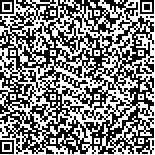| 引用本文: | 王珊珊,李云梅,王永波,王帅,杜成功.太湖水体叶绿素浓度反演模型适宜性分析.湖泊科学,2015,27(1):150-162. DOI:10.18307/2015.0118 |
| WANG Shanshan,LI Yunmei,WANG Yongbo,WANG Shuai,DU Chenggong.Suitability of the retrieval models for estimating chlorophyll concentration in Lake Taihu. J. Lake Sci.2015,27(1):150-162. DOI:10.18307/2015.0118 |
|
| |
|
|
| 本文已被:浏览 10017次 下载 5621次 |

码上扫一扫! |
|
|
| 太湖水体叶绿素浓度反演模型适宜性分析 |
|
王珊珊, 李云梅, 王永波, 王帅, 杜成功
|
|
江苏省地理信息资源开发与利用协同创新中心, 南京 210023
|
|
| 摘要: |
| 为确定适合太湖水体叶绿素的反演算法,为同类卫星数据的建模和应用提供参考,本文根据太湖2007年11月、2009年4月和2011年8月实测水质参数以及同步光谱数据,结合水色遥感传感器MODIS、MERIS、GOCI及我国自主发射的HJ-1号卫星CCD传感器波段参数,基于差值模型、比值模型、三波段模型及APPEL模型,分别建立太湖水体叶绿素浓度反演模型,并分析模型的适宜性.结果显示,基于不同传感器数据APPEL模型的决定系数为0.7308~0.8107,模型相对误差为15%~24%,均方根误差为21%~32%;三波段模型基于不同传感器数据拟合的决定系数为0.6014~0.7610,相对误差为28%~36%,相对均方根误差为39%~46%;差值模型决定系数为0.4954~0.7244,相对误差为39%~53%,相对均方根误差为51%~72%;比值模型决定系数为0.4918~0.7098,相对误差为41%~55%,相对均方根误差为56%~75%.相比较而言,APPEL模型的稳定性较强,适合于不同传感器数据的太湖水体叶绿素浓度的反演.此外,相应不同传感器波段位置、波段宽度对模型反演的精度和稳定性的影响也不同,当波段位置接近叶绿素特征波长时,较窄的波宽有利于模型精度的提高,波段位置和叶绿素浓度特征波长相差较大时,合理增加波谱范围有利于叶绿素特征信息的获取. |
| 关键词: 太湖 叶绿素浓度 反演模型 遥感 |
| DOI:10.18307/2015.0118 |
| 分类号: |
| 基金项目:国家自然科学基金项目(41271343)资助 |
|
| Suitability of the retrieval models for estimating chlorophyll concentration in Lake Taihu |
|
WANG Shanshan, LI Yunmei, WANG Yongbo, WANG Shuai, DU Chenggong
|
|
Jiangsu Center for Collaboration Innovation in Geographical Information Resource Development and Application, Nanjing 210023, P. R. China
|
| Abstract: |
| In order to determine the most suitable retrieval model for estimating chlorophyll concentration in Lake Taihu and provide a reference for the application of the satellite data, the difference model, the ratio model, the three-band model and APPEL model were built to estimate chlorophyll concentration based on the data of MODIS, MERIS, GOCI and HJ-1 CCD sensor. The dataset included the measured water quality parameters and the synchronous spectra data in November 2007, April 2009 and August 2011. The results of the analysis showed that the decision coefficient of the APPEL model was between 0.7308 and 0.8107 for the different satellite data, the relative error was between 15% and 24%, and the root mean square error was between 21% and 32%; The decision coefficient of the three-band model was between 0.6014 and 0.7610, the relative error was between 28% and 36%, and the root mean square error was between 39% and 46%; The decision coefficient of different models was between 0.4954 and 0.7244, the relative error was between 39% and 53%, and the root mean square error was between 51% and 72%; The decision coefficient of the ratio model was between 0.4918 and 0.7098, the relative error was between 41% and 55%, and the root mean square error was between 56% and 75%.To sum up, the APPEL model showed a strong stability and was suitable for the chlorophyll concentration retrieval of Lake Taihu for different sensor data. In addition, different band widths and band positions had different influences on the retrieval model for estimating chlorophyll concentration.When the band position was close to the characteristic wavelength of chlorophyll, narrow band width was beneficial for the accuracy of the model; while when the band position was far away from the position of the characteristic wavelength, the band width should be increased reasonably. |
| Key words: Lake Taihu chlorophyll concentration retrieval model remote sensing |
|
|
附件
|
|